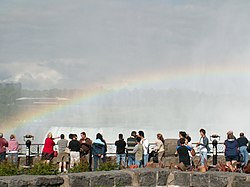
Tourism is travel for pleasure, and the commercial activity of providing and supporting such travel. UN Tourism defines tourism more generally, in terms which go "beyond the common perception of tourism as being limited to holiday activity only", as people "travelling to and staying in places outside their usual environment for not more than one consecutive year for leisure and not less than 24 hours, business and other purposes". Tourism can be domestic or international, and international tourism has both incoming and outgoing implications on a country's balance of payments.

Ecotourism is a form of nature-oriented tourism intended to contribute to the conservation of the natural environment, generally defined as being minimally impactful, and including providing both contributions to conservation and environmental education. The definition sometimes also includes being financially beneficial to the host community or making conservation financially possible. There are a range of different definitions, and the correct definition of the term was an active subject of debate as of 2009. The term is also used more widely by many organizations offering nature tourism, which do not focus on being beneficial to the environment.

A tourist attraction is a place of interest that tourists visit, typically for its inherent or an exhibited natural or cultural value, historical significance, natural or built beauty, offering leisure and amusement.

Sex tourism is the practice of traveling to foreign countries, often on a different continent, with the intention of engaging in sexual activity or relationships, in exchange providing money or lifestyle support. This practice predominantly operates in countries where sex work is legal. The World Tourism Organization of the United Nations has acknowledged that this industry is organized both within and outside the structured laws and networks created by them.

Cultural tourism is a type of tourism in which the visitor's essential motivation is to learn, discover, experience and consume the cultural attractions and products offered by a tourist destination. These attractions and products relate to the intellectual, spiritual, and emotional features of a society that encompasses arts and architecture, historical and cultural heritage, culinary heritage, literature, music, creative industries as well as the living cultures with their lifestyles, value systems, beliefs and traditions.

Sustainable tourism is a concept that covers the complete tourism experience, including concern for economic, social, and environmental issues as well as attention to improving tourists' experiences and addressing the needs of host communities. Sustainable tourism should embrace concerns for environmental protection, social equity, and the quality of life, cultural diversity, and a dynamic, viable economy delivering jobs and prosperity for all. It has its roots in sustainable development and there can be some confusion as to what "sustainable tourism" means. There is now broad consensus that tourism should be sustainable. In fact, all forms of tourism have the potential to be sustainable if planned, developed and managed properly. Tourist development organizations are promoting sustainable tourism practices in order to mitigate negative effects caused by the growing impact of tourism, for example its environmental impacts.

Wildlife tourism is an element of many nations' travel industry centered around observation and interaction with local animal and plant life in their natural habitats. While it can include eco- and animal-friendly tourism, safari hunting and similar high-intervention activities also fall under the umbrella of wildlife tourism. Wildlife tourism, in its simplest sense, is interacting with wild animals in their natural habitat, either actively or passively. Wildlife tourism is an important part of the tourism industries in many countries including many African and South American countries, Australia, India, Canada, Indonesia, Bangladesh, Malaysia, Sri Lanka and Maldives among many. It has experienced a dramatic and rapid growth in recent years worldwide and many elements are closely aligned to eco-tourism and sustainable tourism.
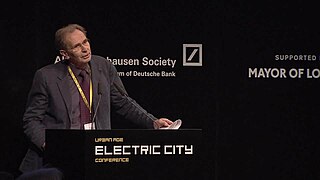
John Richard Urry was a British sociologist who served as a professor at Lancaster University. He is noted for work in the fields of the sociology of tourism and mobility.
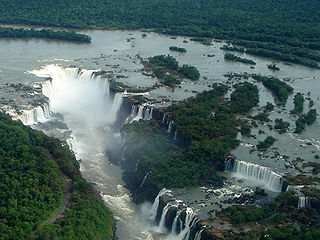
Geotourism is tourism associated with geological attractions and destinations. Geotourism deals with the abiotic natural and built environments. Geotourism was first defined in England by Thomas Alfred Hose in 1995.

Rural tourism is a form of tourism that focuses on actively participating in a rural lifestyle. It can be a variant of ecotourism, emphasizing sustainable practices and community involvement. Many villages can facilitate tourism because of the hospitality and eagerness of villagers to welcome or host visitors. The mechanization of agriculture has reduced the need for manual labor, leading to economic pressures on some villages and prompting young people to migrate to urban areas. However, a segment of the urban population is increasingly interested in visiting rural areas to experience and understand the rural lifestyle.

Tourism carrying capacity (TCC) is an imperfect but useful approach to managing visitors in vulnerable areas. The TCC concept evolved out of the fields of range, habitat and wildlife management. In these fields, managers attempted to determine the largest population of a particular species that could be supported by a habitat over a long period of time.
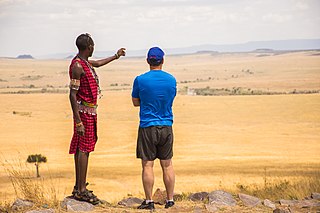
Tourism in Kenya is Kenya's third largest source of foreign exchange revenue, following diaspora remittances and agriculture. The Kenya Tourism Board is responsible for maintaining information about tourism in Kenya.
The following outline is provided as an overview of and topical guide to social science:
Mobilities is a contemporary paradigm in the social sciences that explores the movement of people, ideas and things (transport), as well as the broader social implications of those movements. Mobility can also be thought as the movement of people through social classes, social mobility or income, income mobility.
Walter Hunziker (1899–1974) was a Swiss professor who founded the Tourism Research Institute at the University of St. Gallen, co-developed the scientific study of tourism, developed the travel savings fund concept, co-founded the Association Internationale d'Experts Scientifiques du Tourisme (AIEST) and the Institut International de Glion. He was a director of the Swiss Tourism Federation, member of Swiss Advisory Committee for Trade Policy, and author.
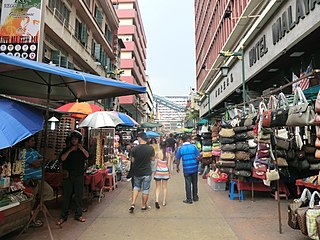
Fashion tourism is a niche market segment evolved out of three major sectors: Creative Tourism, Cultural Tourism and Shopping Tourism. Fashion Tourism can be defined as “the interaction between Destination Marketing Organizations (DMOs), trade associations, tourism suppliers and host communities, with people travelling to and visiting a particular place for business or leisure to enjoy, experiment, discover, study, trade, communicate about and consume fashion.”
Tourism impacts tourist destinations in both positive and negative ways, encompassing economic, political, socio-cultural, environmental, and psychological dimensions.

Cultural sustainability as it relates to sustainable development, has to do with maintaining cultural beliefs, cultural practices, heritage conservation, culture as its own entity, and the question of whether or not any given cultures will exist in the future. From cultural heritage to cultural and creative industries, culture is both an enabler and a driver of the economic, social, and environmental dimensions of sustainable development. Culture is defined as a set of beliefs, morals, methods, institutions and a collection of human knowledge that is dependent on the transmission of these characteristics to younger generations. Cultural sustainability has been categorized under the social pillar of the three pillars of sustainability, but some argue that cultural sustainability should be its own pillar, due to its growing importance within social, political, environmental, and economic spheres. The importance of cultural sustainability lies within its influential power over the people, as decisions that are made within the context of society are heavily weighed by the beliefs of that society.

Scuba diving tourism is the industry based on servicing the requirements of recreational divers at destinations other than where they live. It includes aspects of training, equipment sales, rental and service, guided experiences and environmental tourism.

Slow tourism is an alternative tourism choice in contrast to mass tourism. Slow tourism is a part of the sustainable tourism family, different from mainstream tourism and emphasizing the tourist’s greater personal awareness. It is characterized by reducing mobility and by taking time to explore local history and culture, while supporting the environment. The concept emerged from the Italian Slow Food movement and the Cittaslow movement.

